Country Population 6.562 million (2010) | Area 3,324,3 km2 | |
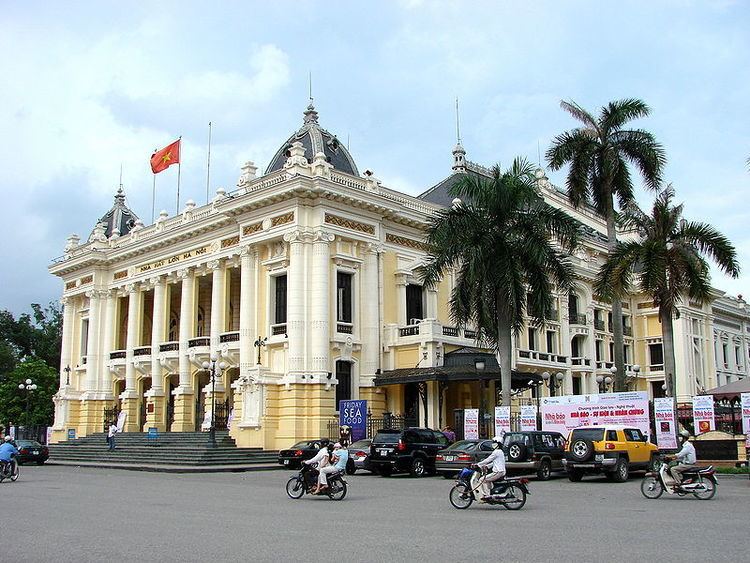 | ||
Points of interest Hoàn Ki?m Lake, Ho Chi Minh Mausoleum, West Lake, Vietnam Museum of Ethnology, Vietnam Military History Museum | ||
Map of Hanoi
Hanoi ( or ; Vietnamese: Hà Nội, [hàː nôjˀ]) is the capital of Vietnam and the country's second largest city by population. Its population in 2009 was estimated at 2.6 million for urban districts and 7 million for the metropolitan jurisdiction. The population in 2015 was estimated at 7.7 million people. From 1010 until 1802, it was the most important political centre of Vietnam. It was eclipsed by Huế, the imperial capital of Vietnam during the Nguyễn Dynasty (1802–1945), but Hanoi served as the capital of French Indochina from 1902 to 1954. From 1954 to 1976, it was the capital of North Vietnam, and it became the capital of a reunified Vietnam in 1976, after the North's victory in the Vietnam War.
Contents
- Map of Hanoi
- Names
- Pre Thng Long period
- Thng Long ng ng Quan ng Kinh
- During Nguyn Dynasty and the French colonial period
- During two wars
- Modern Hanoi
- Location topography
- Climate
- Administrative divisions
- List of local government divisions
- Demographics
- Economy
- Landmarks
- Old Quarter
- Lakes
- Colonial Hanoi
- Museums
- Tourism
- Entertainment
- Shopping
- Cuisine
- Education
- Transport
- Sports
- Health care and other facilities
- International relations
- Twin towns and sister cities
- References
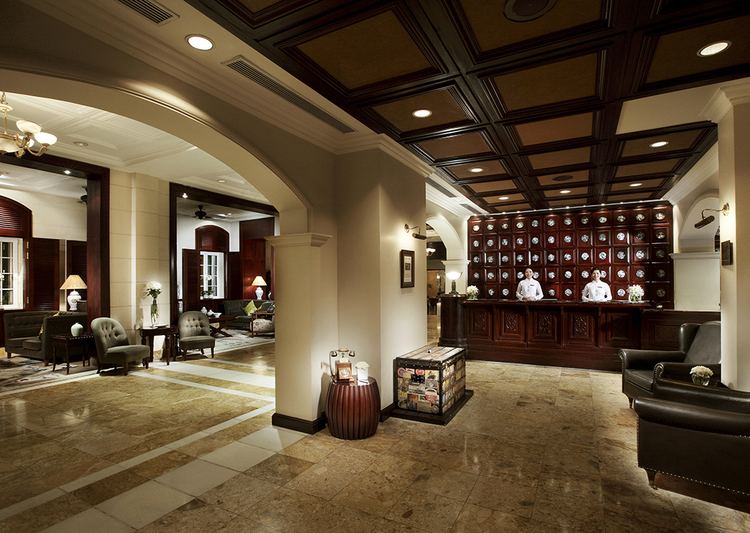
The city lies on the right bank of the Red River. Hanoi is 1,760 km (1,090 mi) north of Ho Chi Minh City and 120 km (75 mi) west of Hai Phong city.

October 2010 officially marked 1000 years since the establishment of the city. The Hanoi Ceramic Mosaic Mural is a 4 km ceramic mosaic mural created to mark the occasion.
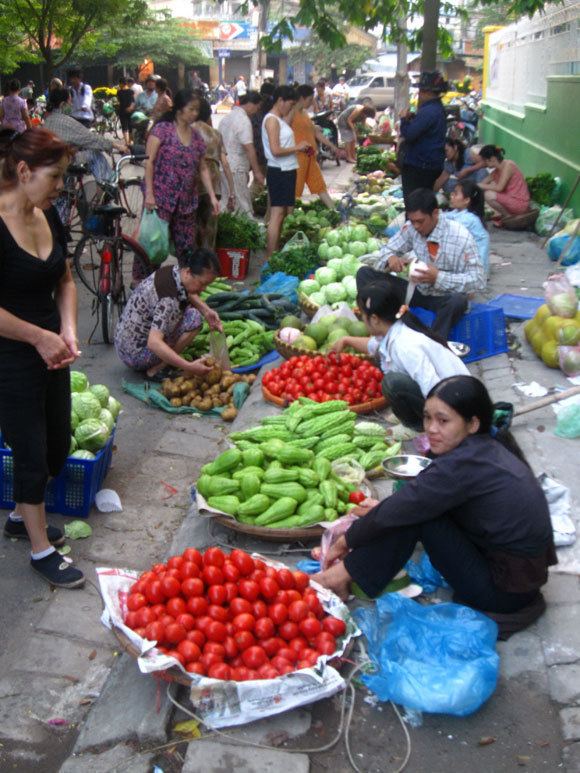
Names
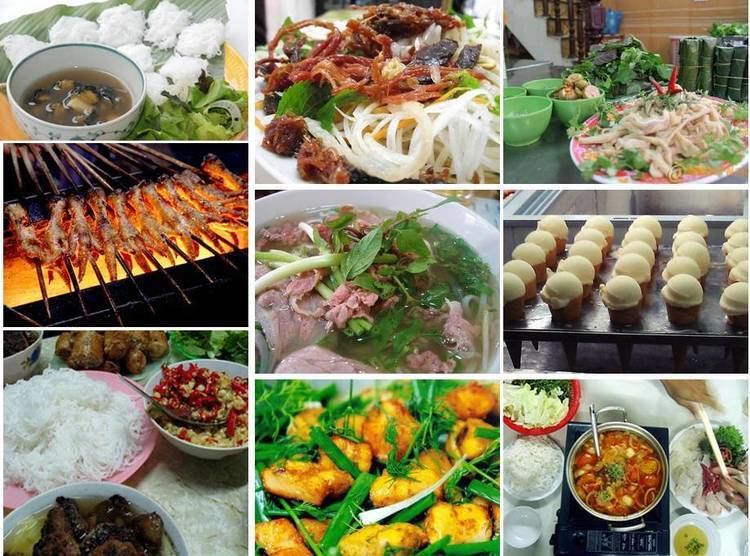
Hanoi (河內, "inside (the) river") has had many official and unofficial names throughout history.
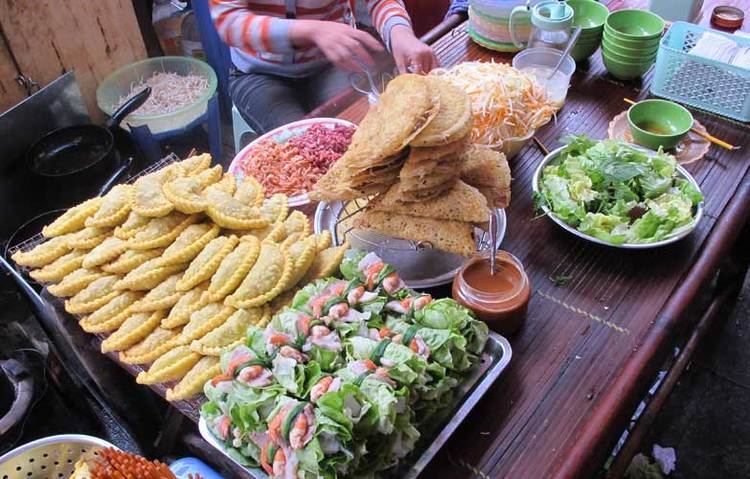
Pre-Thăng Long period
Hanoi has been inhabited since at least 3000 BC. The Cổ Loa Citadel in Dong Anh district served as the capital of the Âu Lạc kingdom founded by the Shu emigrant Thục Phán after his 258 BC conquest of the native Văn Lang.
In 197 BC, Âu Lạc Kingdom was annexed by Nanyue, which ushered in more than a millennium of Chinese domination. By the middle of the 5th century, in the center of ancient Hanoi, the Liu Song Dynasty set up a new district (縣) called Songping (Tong Binh), which later became a commandery (郡), including two districts Yihuai (義懷) and Suining (綏寧) in the south of the Red River (now Từ Liêm and Hoài Đức districts) with a metropolis (the domination centre) in the present inner Hanoi. By the year 679, the Tang dynasty changed the region's name into Annan (Pacified South), with Songping as its capital.
In order to defeat the people's uprisings, in the later half of the 8th century, Zhang Boyi (張伯儀), a Tang dynasty viceroy, built Luocheng (羅城, La Thanh or La citadel, from Thu Le to Quan Ngua in present-day Ba Dinh precinct). In the earlier half of the 9th century, it was further built up and called Jincheng (金城, Kim Thanh or Kim Citadel). In 866, Gao Pian, the Chinese Jiedushi, consolidated and named it Daluocheng (大羅城, Dai La citadel, running from Quan Ngua to Bach Thao), the then-largest citadel of ancient Hanoi.
Thăng Long, Đông Đô, Đông Quan, Đông Kinh
In 1010, Lý Thái Tổ, the first ruler of the Lý Dynasty, moved the capital of Đại Việt to the site of the Đại La Citadel. Claiming to have seen a dragon ascending the Red River, he renamed the site Thăng Long (昇龍, "Soaring Dragon") – a name still used poetically to this day. Thăng Long remained the capital of Đại Việt until 1397, when it was moved to Thanh Hóa, then known as Tây Đô (西都), the "Western Capital". Thăng Long then became Đông Đô (東都), the "Eastern Capital."
In 1408, the Chinese Ming Dynasty attacked and occupied Vietnam, changing Đông Đô's name to Dongguan (Chinese: 東關, Eastern Gateway), or Đông Quan in Sino-Vietnamese. In 1428, the Vietnamese overthrew the Chinese under the leadership of Lê Lợi, who later founded the Lê Dynasty and renamed Đông Quan Đông Kinh (東京, "Eastern Capital") or Tonkin. Right after the end of the Tây Sơn Dynasty, it was named Bắc Thành (北城, "Northern Citadel").
During Nguyễn Dynasty and the French colonial period
In 1802, when the Nguyễn Dynasty was established and moved the capital to Huế, the old name Thăng Long was modified to become Thăng Long (昇隆, "Soaring Dragon"). In 1831, the Nguyễn emperor Minh Mạng renamed it Hà Nội (河内, "Between Rivers" or "River Interior"). Hanoi was occupied by the French in 1873 and passed to them ten years later. As Hanoï, it was located in the protectorate of Tonkin became the capital of French Indochina after 1887.
During two wars
The city was occupied by the Imperial Japanese in 1940 and liberated in 1945, when it briefly became the seat of the Viet Minh government after Ho Chi Minh proclaimed the independence of Vietnam. However, the French returned and reoccupied the city in 1946. After nine years of fighting between the French and Viet Minh forces, Hanoi became the capital of an independent North Vietnam in 1954.
During the Vietnam War, Hanoi's transportation facilities were disrupted by the bombing of bridges and railways. These were all, however, promptly repaired. Following the end of the war, Hanoi became the capital of a reunified Vietnam when North and South Vietnam were reunited on 2 July 1976.
Modern Hanoi
On 29 May 2008, it was decided that Hà Tây Province, Vĩnh Phúc Province's Mê Linh District and 4 communes of Lương Sơn District, Hòa Bình Province be merged into the metropolitan area of Hanoi from 1 August 2008. Hanoi's total area then increased to 334,470 hectares in 29 subdivisions with the new population being 6,232,940., effectively tripling its size. The Hanoi Capital Region (Vùng Thủ đô Hà Nội), a metropolitan area covering Hanoi and 6 surrounding provinces under its administration, will have an area of 13,436 square kilometres (5,188 sq mi) with 15 million people by 2020.
Hanoi has experienced a rapid construction boom recently. Skyscrapers, popping up in new urban areas, have dramatically changed the cityscape and have formed a modern skyline outside the old city. In 2015, Hanoi is ranked # 39 by Emporis in the list of world cities with most skyscrapers over 100 m; its two tallest buildings are Hanoi Landmark 72 Tower (336 m, tallest in Vietnam and second tallest in south-east Asia after Malaysia's Petronas Twin Towers) and Hanoi Lotte Center (272 m, also, second tallest in Vietnam).
Location, topography
Hanoi is located in northern region of Vietnam, situated in the Vietnam's Red River delta, nearly 90 km (56 mi) away from the coastal area. Hanoi contains three basic kind of terrain, which are the delta area, the midland area and mountainous zone. In general, the terrain is gradually lower from the north to the south and from the west to the east, with the average height ranging from 5 to 20 meters above the sea level. The hills and mountainous zones are located in the northern and western part of the city. The highest peak is at Ba Vi with 1281 m, located west of the city proper.
Climate
Hanoi features a warm humid subtropical climate (Köppen Cwa) with plentiful precipitation. The city experiences the typical climate of northern Vietnam, with 4 distinct seasons. Summer, from May until August, is characterized by hot and humid weather with abundant rainfall. September to October is fall, characterized by a decrease in temperature and precipitation. Winter, from November to January, is dry and cool by national standards. The city is usually cloudy and foggy in winter, averaging only 1.5 hours of sunshine per day in February and March.
Hanoi averages 1,680 millimetres (66.1 in) of rainfall per year, the majority falling from May to September. There are an average of 114 days with rain.
The average annual temperature is 23.6 °C (74 °F) with a mean relative humidity of 79%. The highest recorded temperature was 42.8 °C (109 °F) on May 1926 while the lowest recorded temperature was 2.7 °C (37 °F) on January 1955.
Administrative divisions
Hà Nội is divided into 12 urban districts, 1 district-leveled town and 17 rural districts. When Hà Tây was merged into Hanoi in 2008, Hà Đông was transformed into an urban district while Sơn Tây degraded to a district-leveled town. They are further subdivided into 22 commune-level towns (or townlets), 399 communes, and 145 wards.
List of local government divisions
HT – formerly an administrative subdivision unit of the defunct Hà Tây Province
Demographics
Hanoi's population is constantly growing (about 3.5% per year), a reflection of the fact that the city is both a major metropolitan area of Northern Vietnam, and also the country's political centre. This population growth also puts a lot of pressure on the infrastructure, some of which is antiquated and dates back to the early 20th century.
The number of Hanoians who have settled down for more than three generations is likely to be very small when compared to the overall population of the city. Even in the Old Quarter, where commerce started hundreds of years ago and consisted mostly of family businesses, many of the street-front stores nowadays are owned by merchants and retailers from other provinces. The original owner family may have either rented out the store and moved into the adjoining house or moved out of the neighbourhood altogether. The pace of change has especially escalated after the abandonment of central-planning economic policies and relaxing of the district-based household registrar system.
Hanoi's telephone numbers have been increased to 8 digits to cope with demand (October 2008). Subscribers' telephone numbers have been changed in a haphazard way; however, mobile phones and SIM cards are readily available in Vietnam, with pre-paid mobile phone credit available in all areas of Hanoi.
Economy
Hanoi has the highest Human Development Index among the cities in Vietnam.According to a recent ranking by PricewaterhouseCoopers, Hanoi will be the fastest growing city in the world in terms of GDP growth from 2008 to 2025. In the year 2013, Hanoi contributed 12.6% to GDP, exported 7.5% of total exports, contributed 17% to the national budget and attracted 22% investment capital of Vietnam. The city's nominal GDP at current prices reached 451,213 billion VND (21.48 billion USD) in 2013, which made per capita GDP stand at 63.3 million VND (3,000 USD). Industrial production in the city has experienced a rapid boom since the 1990s, with average annual growth of 19.1 percent from 1991–95, 15.9 percent from 1996–2000, and 20.9 percent during 2001–2003. In addition to eight existing industrial parks, Hanoi is building five new large-scale industrial parks and 16 small- and medium-sized industrial clusters. The non-state economic sector is expanding fast, with more than 48,000 businesses currently operating under the Enterprise Law (as of 3/2007).
Trade is another strong sector of the city. In 2003, Hanoi had 2,000 businesses engaged in foreign trade, having established ties with 161 countries and territories. The city's export value grew by an average 11.6 percent each year from 1996–2000 and 9.1 percent during 2001–2003. The economic structure also underwent important shifts, with tourism, finance, and banking now playing an increasingly important role. Hanoi's business districts are traditionally Hoàn Kiếm, Đống Đa District and the neighborhood; and a newly developing Cầu Giấy and Từ Liêm in the western part.
Similar to Ho Chi Minh City, Hanoi enjoys a rapidly developing real estate market. The current most notable new urban areas are central Trung Hoa Nhan Chinh, Mỹ Đình, the luxurious zones of The Manor, Ciputra and Times City.
Agriculture, previously a pillar in Hanoi's economy, has striven to reform itself, introducing new high-yield plant varieties and livestock, and applying modern farming techniques.
Together with economic growth, Hanoi's appearance has also changed significantly, especially in recent years. Infrastructure is constantly being upgraded, with new roads and an improved public transportation system.
Landmarks
As the capital of Vietnam for almost a thousand years, Hanoi is considered one of the main cultural centres of Vietnam, where most Vietnamese dynasties have left their imprint. Even though some relics have not survived through wars and time, the city still has many interesting cultural and historic monuments for visitors and residents alike. Even when the nation's capital moved to Huế under the Nguyễn Dynasty in 1802, the city of Hanoi continued to flourish, especially after the French took control in 1888 and modeled the city's architecture to their tastes, lending an important aesthetic to the city's rich stylistic heritage. The city hosts more cultural sites than any other city in Vietnam, and boasts more than 1,000 years of history; that of the past few hundred years has been well preserved.
Old Quarter
The Old Quarter, near Hoàn Kiếm Lake, maintains most of the original street layout and some of the architecture of old Hanoi. At the beginning of the 20th century Hanoi consisted of the "36 streets", the citadel, and some of the newer French buildings south of Hoàn Kiếm lake, most of which are now part of Hoàn Kiếm district. Each street had merchants and households specializing in a particular trade, such as silk, jewelry or even bamboo. The street names still reflect these specializations, although few of them remain exclusively in their original commerce. The area is famous for its specializations in trades such as traditional medicine and local handicrafts, including silk shops, bamboo carpenters, and tin smiths. Local cuisine specialties as well as several clubs and bars can be found here also. A night market (near Đồng Xuân Market) in the heart of the district opens for business every Friday, Saturday, and Sunday evening with a variety of clothing, souvenirs and food.
Some other prominent places are: The Temple of Literature (Văn Miếu), site of the oldest university in Vietnam 1010; One Pillar Pagoda (Chùa Một Cột) which was built based on the dream of king Lý Thái Tông (1028-1054) in 1049 ; Flag Tower of Hanoi (Cột cờ Hà Nội). In 2004, a massive part of the 900-year-old Hanoi Citadel was discovered in central Hanoi, near the site of Ba Đình Square.
Lakes
A city between rivers built from low land, Hanoi has many scenic lakes and is sometimes called "city of lakes." Among its lakes, the most famous are Hoàn Kiếm Lake, West Lake, and Bảy Mẫu Lake (inside Thống Nhất Park). Hoàn Kiếm Lake, also known as Sword Lake, is the historical and cultural center of Hanoi, and is linked to the legend of the magic sword. West Lake (Hồ Tây) is a popular place for people to spend time. It is the largest lake in Hanoi and there are many temples in the area. The lakeside road in the Nghi Tam – Quang Ba area is perfect for bicycling, jogging and viewing the cityscape or enjoying lotus ponds in the summer. The best way to see the majestic beauty of a West lake sunset is to view it from one of the many bars around the lake, especially from The Summit at Pan Pacific Hanoi (formally known as Summit Lounge at Sofitel Plaza Hanoi)
Colonial Hanoi
Under French rule, as an administrative centre for the French colony of Indochina, the French colonial architecture style became dominant, and many examples remain today: the tree-lined boulevards (e.g. Phan Dinh Phung street) and its many villas and mansions, Grand Opera House, State Bank of Vietnam (formerly The Bank of Indochina), Presidential Palace (formerly the Palace of the Governor-General of French Indochina), St. Joseph's Cathedral, and the historic Hotel Metropole. Many of the colonial structures are an eclectic mixture of French and traditional Vietnamese architectural styles, such as the National Museum of Vietnamese History, the Vietnam National Museum of Fine Arts and the old Indochina Medical College. Gouveneur-Général Paul Doumer (1898-1902) played a crucial role in colonial Hanoi's urban planning. Under his tenure there was a major construction boom.
Critical historians of empire have noted that French colonial rule imposed a system of white supremacy on the city. Vietnamese subjects supplied labor and tax revenue, but the privileges and comforts of the city went to the white population. French efforts at rat eradication revealed some of the colonial city's racial double-standards.
Museums
Hanoi is home to a number of museums:
Tourism
Hanoi is sometimes dubbed the "Paris of the East" for its French influences. With its tree-fringed boulevards, more than two dozen lakes and thousands of French colonial-era buildings, Hanoi is a popular tourist destination.
Since 2014, Hanoi has consistently been voted in the world's top ten destinations by TripAdvisor. It ranked 8th in 2014, 4th in 2015 and 8th in 2016.
Hanoi is the most affordable international destination in TripAdvisor's annual TripIndex report.
Entertainment
A variety of options for entertainment in Hanoi can be found throughout the city. Modern and traditional theaters, cinemas, karaoke bars, dance clubs, bowling alleys, and an abundance of opportunities for shopping provide leisure activity for both locals and tourists. Hanoi has been named one of the top 10 cities for shopping in Asia by Water Puppet Tours. The number of art galleries exhibiting Vietnamese art has dramatically increased in recent years, now including galleries such as "Nhat Huy" of Huynh Thong Nhat.
Nhà Triển Lãm at 29 Hang Bai street hosts regular photo, sculpture, and paint exhibitions in conjuncture with local artists and travelling international expositions.
A popular traditional form of entertainment is Water puppetry, which is shown, for example, at the Thăng Long Water Puppet Theatre.
Shopping
With rapid economic growth and extremely high population density, many modern shopping centers and megamalls have been opened in Hanoi.
Major malls are:
Cuisine
Hanoi has rich culinary traditions. Many of Vietnam's most famous dishes, such as phở, chả cá, bánh cuốn and cốm are believed to have originated in Hanoi. Perhaps most widely known is Phở—a simple rice noodle soup often eaten as breakfast at home or at street-side cafes, but also served in restaurants as a meal. Two varieties dominate the Hanoi scene: Phở Bò, containing beef and Phở Gà, containing chicken. Bún chả, a dish consisting of charcoal roasted pork served in a sweet/salty soup with rice noodle vermicelli and lettuce, is by far the most popular food item among locals. President Obama famously tried this dish at a Le Van Huu eatery with Anthony Bourdain in 2016, prompting the opening of a Bún chả restaurant bearing his name in the Old Quarter.
Vietnam's national dish phở has been named as one of the Top 5 street foods in the world by globalpost.
Hanoi has a number of restaurants whose menus specifically offer dishes containing snake and various species of insects. Insect-inspired menus can be found at a number of restaurants in Khuong Thuong village, Hanoi. The signature dishes at these restaurant are those containing processed ant-eggs, often in the culinary styles of Thai people or Vietnam's Muong and Tay ethnic people. Hanoi is also home to much of the dog eating culture of Vietnam, with several restaurants offering the dish in the Old Quarter and surrounding areas.
Bia Hoi, a local take on a Czech style beer allegedly introduced by guest engineers in post liberation Hanoi, is also a local specialty. This beer is light, gassy, with a very neutral pallet which agrees with the local diet quite well. It contains no preservatives and is therefore "fresh" beer. It is usually purchased for around 5-10,000 dong per glass or around 25 to 40 cents. The beer is produced by a variety of the local breweries and is the tent pole item for many local eateries generally referred to as "bia hoi" which serve a variety of local dishes.
Education
Hanoi, as the capital of French Indochina, was home to the first Western-style universities in Indochina, including: Indochina Medical College (1902) – now Hanoi Medical University, Indochina University (1904) – now Hanoi National University (the largest), and École Supérieure des Beaux-Arts de l'Indochine (1925) – now Hanoi University of Fine Art.
After the Communist Party of Vietnam took control of Hanoi in 1954, many new universities were built, among them, Hanoi University of Technology, still the largest technical university in Vietnam. Recently ULIS (University of Languages and International Studies) was rated as one of the top universities in south-east Asia for languages and language studies at the undergraduate level. Other universities that are not part of Vietnam National University or Hanoi University include Hanoi School for Public Health and Hanoi School of Agriculture and University of Transport and Communications.
Hanoi is the largest center of education in Vietnam. It is estimated that 62% of the scientists in the whole country are living and working in Hanoi. Admissions to undergraduate study are through entrance examinations, which are conducted annually and open to everyone (who has successfully completed his/her secondary education) in the country. The majority of universities in Hanoi are public, although in recent years a number of private universities have begun operation. Thăng Long University, founded in 1988, by Vietnamese mathematics professors in Hanoi and France was the first private university in Vietnam. Because many of Vietnam's major universities are located in Hanoi, students from other provinces (especially in the northern part of the country) wishing to enter university often travel to Hanoi for the annual entrance examination. Such events usually take place in June and July, during which a large number of students and their families converge on the city for several weeks around the intense examination period. In recent years, these entrance exams have been centrally coordinated by the Ministry of Education, but entrance requirements are decided independently by each university.
Although there are state owned kindergartens, there are also many private ventures that serve both local and international needs. Pre-tertiary (elementary and secondary) schools in Hanoi are generally state run, but there are also some independent schools. Education is equivalent to the K–12 system in the U.S., with elementary school between grades 1 and 5, middle school (or junior high) between grades 6 and 9, and high school from grades 10 to 12.
Transport
Hanoi is served by Noi Bai International Airport, located in the Soc Son District, approximately 15 km (9 mi) north of Hanoi. The new international terminal (T2), designed and built by Japanese contractors, opened in January 2015 and is a big facelift for Noibai International Airport. In addition, a new highway and the new Nhat Tan cable-stay bridge connecting the airport and the city center opened at the same time, offering much more convenience than the old road (via Thanglong bridge). Taxis are plentiful and usually have meters, although it is also common to agree on the trip price before taking a taxi from the airport to the city centre.
Hanoi is also the origin or departure point for many Vietnam Railways train routes in the country. The Reunification Express (tàu Thống Nhất) runs from Hanoi to Ho Chi Minh City from Hanoi station (formerly Hang Co station), with stops at cities and provinces along the line. Trains also depart Hanoi frequently for Hai Phong and other northern cities. The Reunification Express line was established during French colonial rule and was completed over a period of nearly forty years, from 1899 to 1936. The Reunification Express between Hanoi and Ho Chi Minh City covers a distance of 1,726 km (1,072 mi) and takes approximately 33 hours. As of 2005, there were 278 stations on the Vietnamese railway network, of which 191 were located along the North-South line.
The main means of transport within Hanoi city are motorbikes, buses, taxis, and a rising number of cars. In recent decades, motorbikes have overtaken bicycles as the main form of transportation. Cars however are probably the most notable change in the past 5 years as many Vietnamese people purchase the vehicles for the first time. The increased number of cars are the main cause gridlock as roads and infrastructure in the older parts of Hanoi were not designed to accommodate them. On 4 July 2017, the Hanoi government voted to ban motorbikes entirely by 2030, in order to reduce pollution, congestion, and encourage the expansion and use and public transport.
There are 2 metro lines under construction in Hanoi now. The first one is expected to be operational in 2018, the second in 2021.
Persons on their own or traveling in a pair who wish to make a fast trip around Hanoi to avoid traffic jams or to travel at an irregular time or by way of an irregular route often use "xe ôm" (literally, "hug bike"). Motorbikes can also be rented from agents within the Old Quarter of Hanoi, although this falls inside a rather grey legal area.
Sports
There are several gymnasiums and stadiums throughout the city of Hanoi. The biggest ones are Mỹ Đình National Stadium (Lê Đức Thọ Boulevard), Quan Ngua Sporting Palace (Văn Cao Avenue), Hanoi Aquatics Sports Complex and Mỹ Đình Indoor Athletics Gymnasium. The others include Hà Nội Stadium (also known as Hàng Đẫy stadium). The third Asian Indoor Games were held in Hanoi in 2009. The others are Hai Bà Trưng Gymnasium, Trịnh Hoài Đức Gymnasium, Vạn Bảo Sports Complex.
Health care and other facilities
Some medical facilities in Hanoi:
International relations
Hanoi is a member of the Asian Network of Major Cities 21 and the C40 Cities Climate Leadership Group.
Twin towns and sister cities
Hanoi is twinned with:
